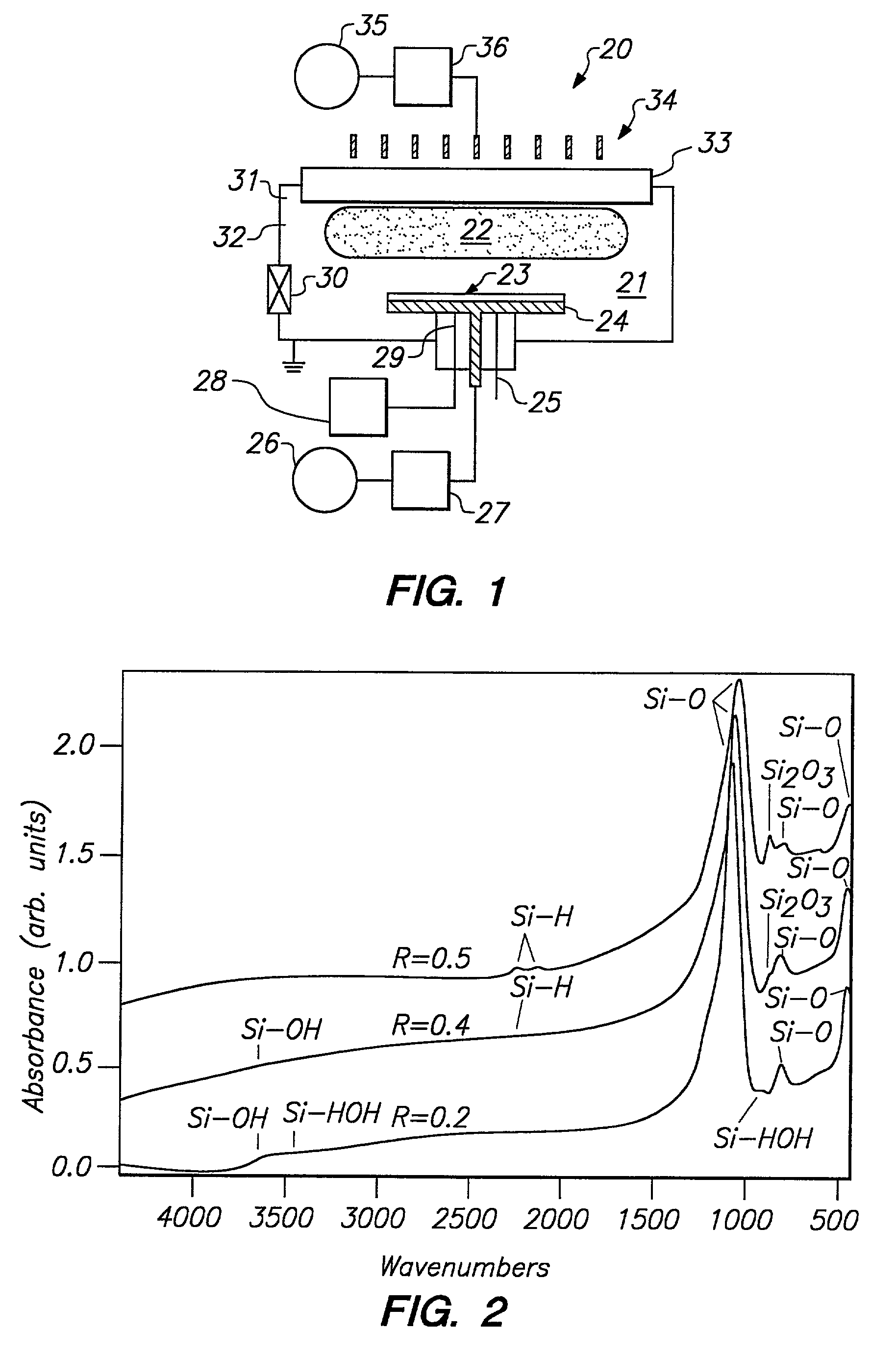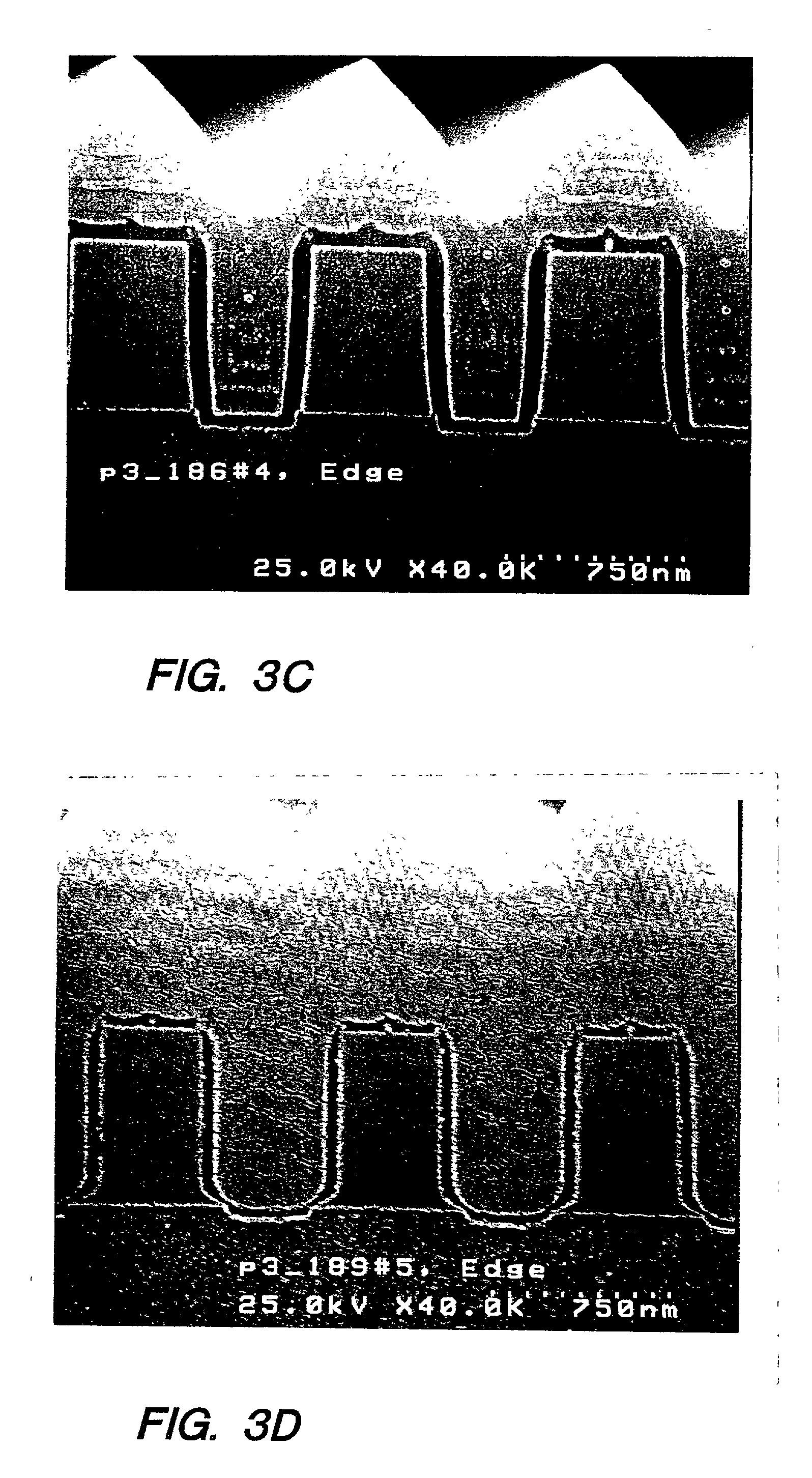Inductively coupled plasma CVD
a plasma cvd and inductive coupling technology, applied in the field of inductive coupling plasma cvd, can solve the problems of high cost, complex ecr and helicon sources which rely on magnetic fields, and unsuitable techniques for gap widths below 0.5 microns,
- Summary
- Abstract
- Description
- Claims
- Application Information
AI Technical Summary
Problems solved by technology
Method used
Image
Examples
example ii
[0068] (Gap-fill and Capping Processes)
[0069] SiO.sub.2 IMD and capping depositions were conducted in an ICP system similar to that of FIG. 4. In this example 200 mm wafers were processed. The wafers were
[0070] In these depositions (0.5 .mu.m gaps), argon was included in the process gas.
[0071] However, the addition of argon is not always necessary as indicated in the preferred ranges. In the deposition of the cap layer, the initial deposition can employ a high electrode RF bias power to produce a good quality film. Thereafter, a lower bias power can be applied (preferably while maintaining about the same electrode temperature) to produce a sacrificial cap layer of lesser quality. Typically this sacrificial cap layer is substantially removed in a subsequent planarization process.
[0072] Generally a higher substrate temperature improves deposited film properties.
[0073] Typically, there are two primary contributors to the substrate temperature: (1) thermal heating from the substrate sup...
PUM
| Property | Measurement | Unit |
|---|---|---|
| frequency | aaaaa | aaaaa |
| temperature | aaaaa | aaaaa |
| temperature | aaaaa | aaaaa |
Abstract
Description
Claims
Application Information
 Login to View More
Login to View More - R&D
- Intellectual Property
- Life Sciences
- Materials
- Tech Scout
- Unparalleled Data Quality
- Higher Quality Content
- 60% Fewer Hallucinations
Browse by: Latest US Patents, China's latest patents, Technical Efficacy Thesaurus, Application Domain, Technology Topic, Popular Technical Reports.
© 2025 PatSnap. All rights reserved.Legal|Privacy policy|Modern Slavery Act Transparency Statement|Sitemap|About US| Contact US: help@patsnap.com



